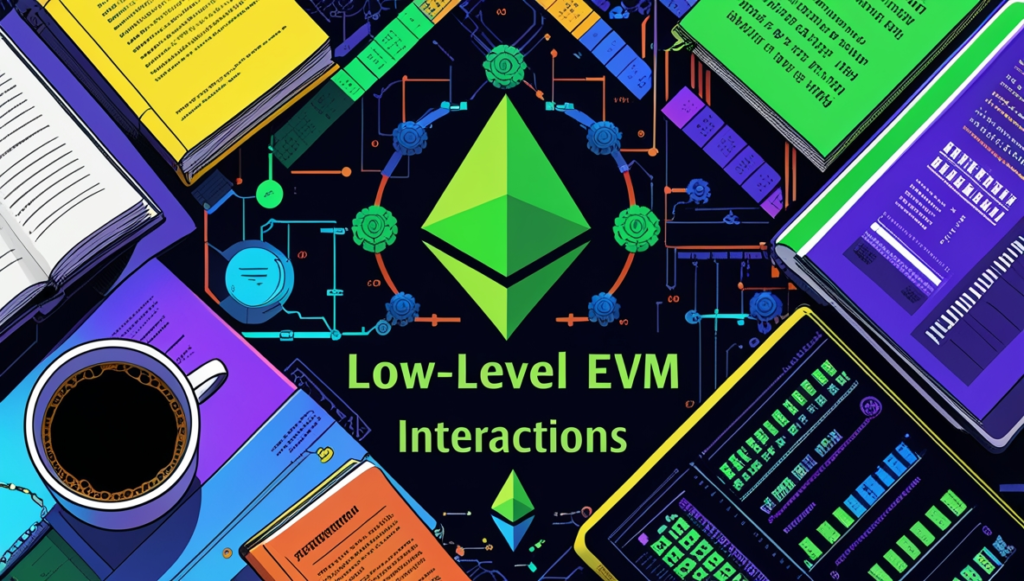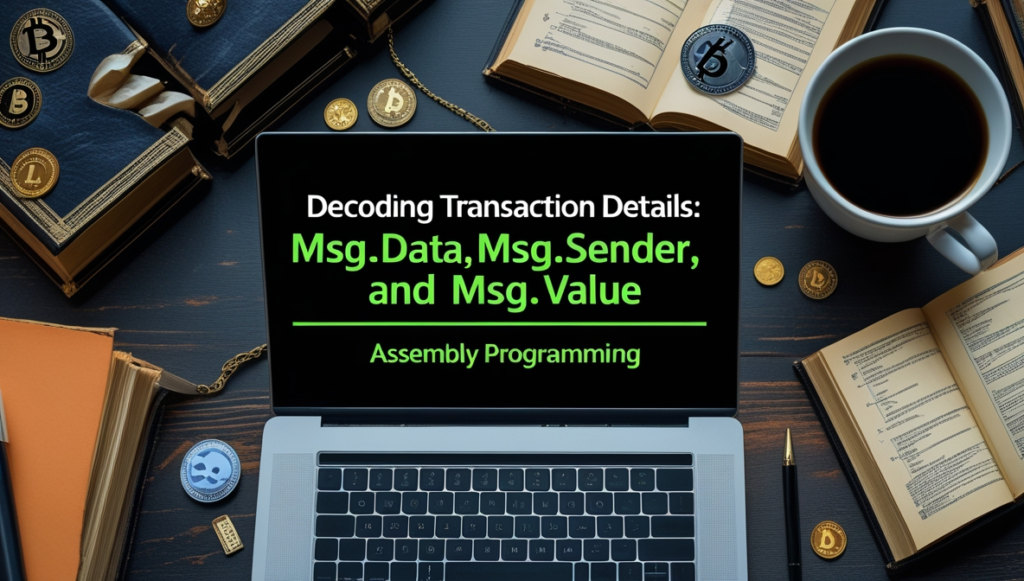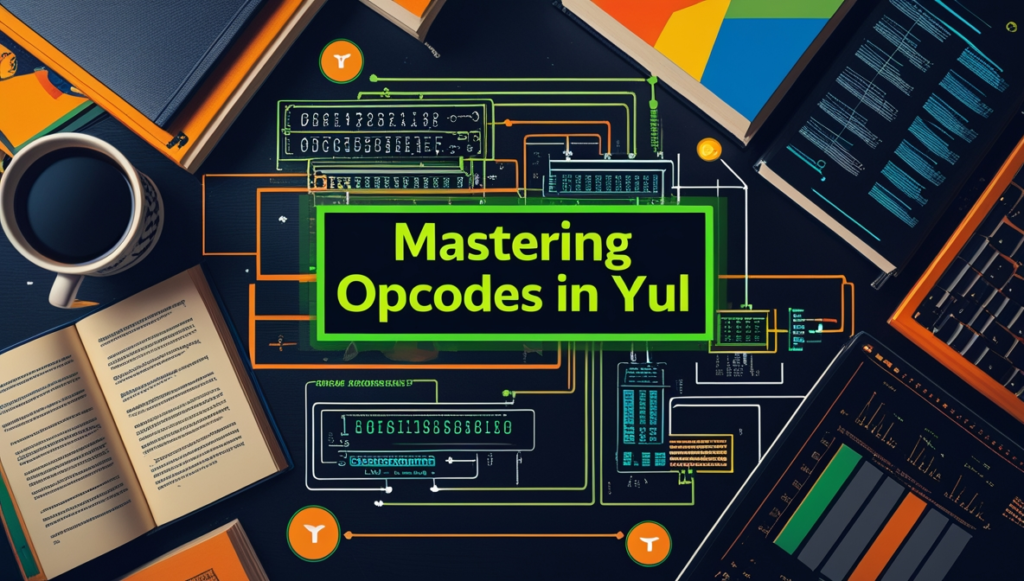Advanced Yul Concepts: When you venture into the world of Ethereum development, you quickly realize how essential understanding the Ethereum Virtual Machine (EVM) is. Yul, a low-level intermediate language, lets you write efficient and optimized smart contracts by directly interacting with the EVM. In this chapter, we’ll break down advanced Yul concepts in an approachable way, covering topics like low-level EVM interactions, calls (call, delegatecall, staticcall), transaction details (msg.data, msg.sender, msg.value), opcodes, and fallback functions.
Let’s simplify these advanced concepts and explore how they can make your contracts more powerful and efficient.
Table of Contents
Why Learn Advanced Yul Concepts?

If you’re already familiar with basic Yul programming, diving deeper can:
- Save Gas: Advanced techniques optimize your contract’s performance.
- Unlock Flexibility: Gain more control over transactions and memory management.
- Enhance Security: Address edge cases and potential vulnerabilities.
In short, mastering these concepts gives you better control over how your contracts behave, making them leaner, faster, and more secure.
Low-Level EVM Interactions:

Low-level interactions allow developers to bypass abstractions, offering greater control. This can mean managing transaction payloads, optimizing memory, or implementing custom logic for unexpected scenarios.
Benefits of Low-Level EVM Interactions:
- Efficiency: Write tailored code to save gas.
- Precision: Handle transaction details with raw data.
- Fallback Handling: Seamlessly manage unrecognized transactions or ether transfers.
For example, if you need to optimize for gas consumption, low-level calls in Yul allow you to avoid unnecessary computation overhead.
Calls: call, delegatecall, and staticcall
In Ethereum, contracts often interact with one another. Yul provides three critical ways to handle these communications:
1. call: The All-Purpose Workhorse
call is a flexible method used to transfer ether or execute external contract functions. It’s powerful but must be implemented carefully to avoid security issues.
Example:
let success := call(gas(), targetAddress, callValue, inputOffset, inputSize, outputOffset, outputSize)- When to Use:
- Sending ether programmatically.
- Interacting with external contracts.
2. delegatecall: Sharing Logic Across Contracts
With delegatecall, you can execute code from another contract while maintaining the calling contract’s storage and balance. It’s a key feature for creating upgradable smart contracts.
Example:
let success := delegatecall(gas(), targetAddress, inputOffset, inputSize, outputOffset, outputSize)- When to Use:
- Building proxies for upgradable systems.
- Sharing logic across multiple contracts.
3. staticcall: Safe, Read-Only Execution
staticcall is designed for operations that don’t change the contract’s state. It’s perfect for fetching data without risking accidental state changes.
Example:
let success := staticcall(gas(), targetAddress, inputOffset, inputSize, outputOffset, outputSize)When to Use:
- Querying data safely.
- Ensuring state immutability during execution.
Decoding Transaction Details: msg.data, msg.sender, and msg.value

msg.data, msg.sender, and msg.valueUnderstanding transaction details is crucial for building robust smart contracts. These elements give you insights into the nature of a transaction.
1. msg.data: The Raw Payload
msg.data holds the raw input data sent with a transaction, typically used to identify the function being called and its parameters.
Example:
let data := calldataload(0)- Why It’s Useful: Helps decode the transaction’s intent.
2. msg.sender: Who’s Calling?
msg.sender identifies the originator of the transaction. This could be a user or another contract.
Example:
let sender := caller()- Why It’s Useful: Ensures proper authorization and accountability.
3. msg.value: The Ether Attached
msg.value tells you how much ether is being sent with the transaction.
Example:
let value := callvalue()- Why It’s Useful: Helps manage financial interactions within your contract.
Mastering Opcodes in Yul

Opcodes are the basic instructions executed by the EVM. Yul provides direct access to opcodes, letting you perform efficient, low-level operations.
Frequently Used Opcodes:
calldataload: Reads input data from the transaction.mload: Loads data from memory.sload: Accesses data stored in contract storage.mstore: Writes data to memory.sstore: Writes data to storage.
Example:
mstore(0x40, 0x1234) // Store a value in memory
let value := mload(0x40) // Retrieve the stored valueWhy Use Opcodes?
- Fine-grained control over contract execution.
- Gas optimization by minimizing unnecessary computations.
Implementing Fallback Functions in Yul
A fallback function acts as a safety net for transactions that don’t match any known function signature. It’s especially useful for handling ether transfers and unexpected calls.
Example:
function fallback() {
let selector := calldataload(0)
switch selector
case 0x12345678 { /* Specific logic */ }
default { revert(0, 0) }
}Why Use Fallback Functions?
- Handle Undefined Calls: Prevent transactions from failing.
- Enable Ether Transfers: Manage incoming payments seamlessly.
- Enhance Security: Ensure proper handling of unrecognized transactions.
Practical Tips for Advanced Yul Programming
- Focus on Optimization: Avoid unnecessary writes to storage to reduce gas fees.
- Understand Opcodes: Knowing how opcodes work can help you write better, more efficient contracts.
- Thorough Testing: Low-level operations can be error-prone; ensure you test rigorously.
- Learn from Examples: Study real-world implementations to understand best practices.
Wrapping It Up: Why Advanced Yul Matters
Advanced Yul concepts unlock a new level of control and efficiency for Ethereum developers. From mastering call and delegatecall to working with opcodes and implementing fallback functions, these tools empower you to build robust, secure, and gas-efficient smart contracts. Whether you’re optimizing existing solutions or crafting something entirely new, understanding these concepts will set you apart in the Ethereum development community.
The journey doesn’t stop here—keep experimenting and pushing the limits of what you can achieve with Yul and the EVM. The more you practice, the more confident and creative you’ll become.


